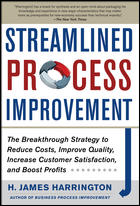Kelly Allan has seen many examples of continual improvement gone awry. He offers this cautionary tale from a client.
Procurement found a deal on some equipment and materials. They began using new suppliers and getting rid of old ones. After some time, it was clear that this new plan had some flaws.
The low-cost piece of equipment was one issue—it didn’t work well—and another was the plant environment, specifically the lack of air conditioning. The newer ingredients and labels didn’t perform well under the humid conditions. Ingredients changed in the heat, and the labels didn’t stick.
Quality and operations were blamed for the situation, though the problems had started further upstream. When looking at the procurement department, “you wouldn’t think it affects the quality or operations department but of course it does,” Allan says.
Allan, chair of The W. Edwards Deming Institute advisory council and owner of Kelly Allan Associates Ltd., was scheduled to speak about continual improvement at this year’s ASQ World Conference.
It’s a predictable tale for those in quality. As you might have expected, the cost cutting ends up costing a fortune in the end. The “deal” resulted in loss of revenue and market share.
If this tale of woe sounds familiar, it may be time to rethink your continual improvement efforts. One suggestion is branching out beyond your department, Allan suggests.
Do you have an ally in another department? If you work in quality, it may be a good idea to have contacts in procurement, design and operations, for example. Keeping departments separate is not in anyone’s best interests. Unless organizations work together as a system, problems will result, he notes, a theory put forth by Deming.
“Quality and productivity are the same thing,” Allan says, citing another Deming concept. “As quality goes up, productivity goes up and costs go down.”
Another suggestion for improvement is to look beyond technical quality to strategic quality, Allan says.
“There’s just so much opportunity but we’re not going to find it in our traditional gages and tools—not just physical tools, diagnosis tools like Pareto or control charts,” Allan says. “Companies that are making a difference and leading the trends, they hear the voice of the quality people.”
“Tools are great, robust, they have changed the world,” Allan says. But these are no longer enough: “Technical quality is no longer much of a differentiator. The future is strategic quality.”
On a micro level, Allan advises finding a tactful way to address issues that are causing problems, even those outside your traditional purview. Quality practitioners have to have a voice and offer suggestions on how to reduce costs.
“Those are the quality practitioners who are going to have the better jobs and in Deming’s words, ‘more joy in work,’” Allan says. And considering how much time is spent at work, this is no small matter.
In his long career, he’s met thousands of quality practitioners and says they all want to make a difference. They got into the field to improve quality. But, Allan says, they gradually gets discouraged over time. They lose the spark that brought them into the field to begin with.
For those quality practitioners looking to improve, he suggests looking beyond the status quo.
“Don’t accept that what you know about technical quality is what you’re going to need to know in three to five years in strategic quality.” Thinking bigger provides more job security, more money, and allows you to make a bigger difference, he says. On a personal level, you benefit and so does your organization.
“Having excellent quality only gets you a seat at the table, it does not put you ahead,” Allan says. “That’s been becoming true for quite some time, and it’s definitely true now.”
Make Plans Reality
John Hunter, author of “Management Matters: Building Enterprise Capability” and founder of curiouscat.com, also has advice for manufacturers looking to implement a continual improvement program.
“Most management efforts to improve are not successful,” Hunter says. “The reason for this is more about commitment than anything else. An organization needs to figure out what it will actually commit to and then commit itself to that wholeheartedly. Don’t begin an effort with the hope that things will work out. Only commit to do those things that the leadership is going to put their time and effort behind for week after week, month after month, year after year.”
“That will allow you to avoid the most common reason for failure: talking about big plans that there is no interest in actually doing the work to make into reality,” Hunter says. “It doesn’t mean you can’t focus on continual improvement just that you should scope your plans to what those who decide how the organization’s resources will be directed are committed to making happen.”
Hunter cites a quote from W. Edwards Deming from “Out of the Crisis” that speaks to this issue.
“Support of top management is not sufficient,” Deming says. “It is not enough that top management commit themselves for life to quality and productivity. They must know what it is that they are committed to—that is, what they must do. These obligations can not be delegated. Support is not enough: action is required.”
Of course, taking action is one thing, but knowing what action to take is another. Hunter offers some suggestions on getting started: “Start small and grow with success is a better strategy than promising a bright new culture without a realistic path to get there (and by realistic I mean one that accepts how hard this is),” Hunter says. “The reason so many efforts fail is that instead of making the hard decisions needed to change, people just talk about a couple neat ideas they read about and think now that they said we should make an effort to fix what can be improved that will now happen.”
Now’s the time to recapture that enthusiasm you may have had just starting out in your quality career. It is possible to improve quality, reduce costs, and enjoy your work. Continual improvement takes effort and planning, but the endeavor pays dividends for everyone involved. Q





